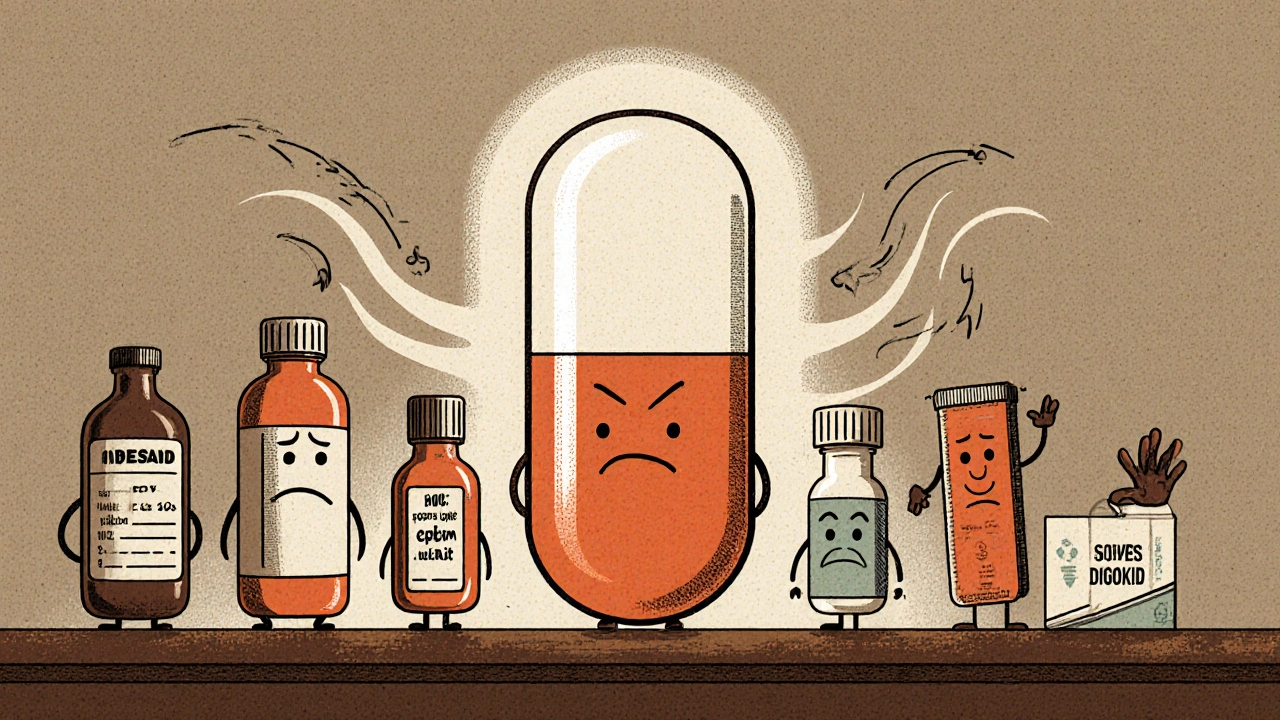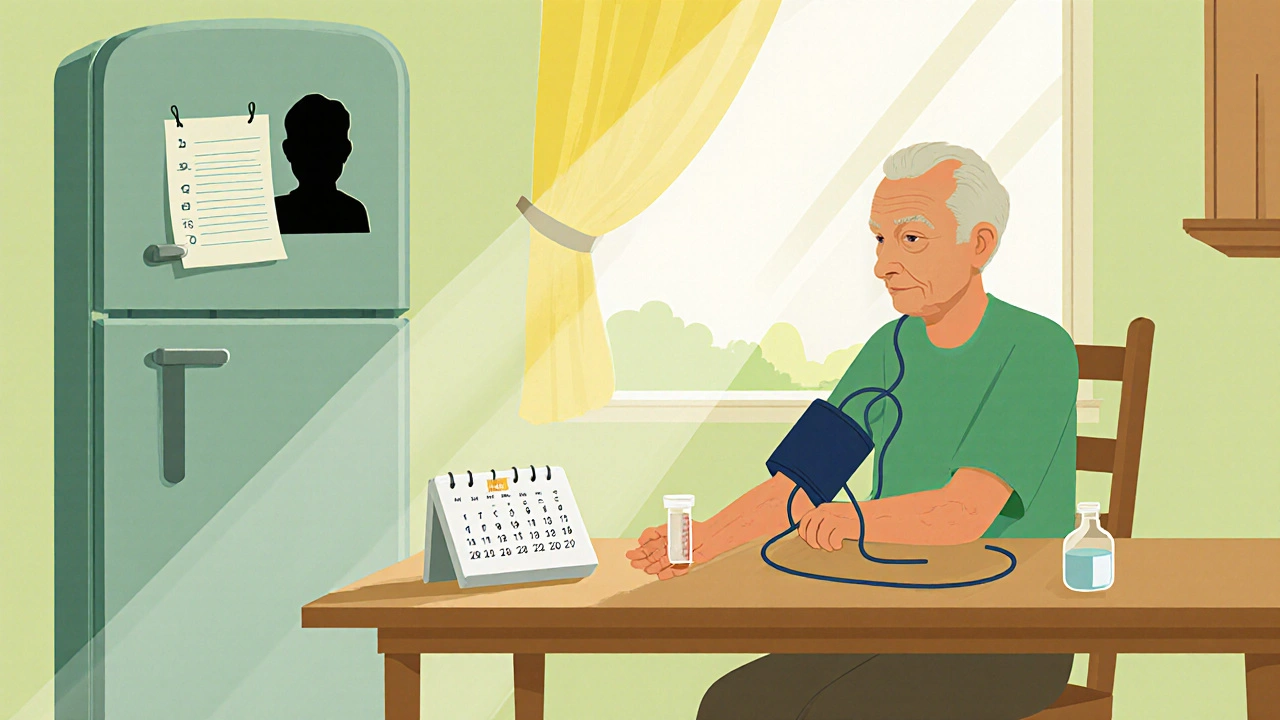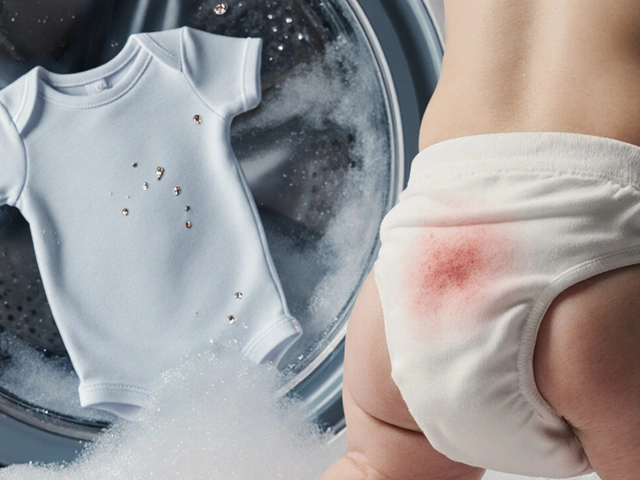Oct
25

- by Gareth Harington
- 2 Comments
When you’re prescribed Irbesartan Hydrochlorothiazide is a fixed‑dose combination of an angiotensin II receptor blocker (ARB) and a thiazide diuretic used to control high blood pressure. It works well for many, but like any medication it can get tangled up with other drugs you’re taking. Understanding the Irbesartan Hydrochlorothiazide drug interactions helps you avoid nasty side effects and keep your blood pressure in check.
Why Interactions Matter
Even a modest interaction can swing blood pressure up or down, mess with electrolyte balances, or strain your kidneys. The combo pill adds two layers of risk because you’re dealing with both an ARB and a diuretic at the same time. Knowing the red flags means you can catch problems early, talk to your pharmacist, and adjust doses before anything serious happens.
Key Players in the Interaction Landscape
- Irbesartan - the ARB part that blocks angiotensin II receptors, lowering vasoconstriction.
- Hydrochlorothiazide - a thiazide diuretic that reduces fluid volume and sodium reabsorption.
- NSAIDs (e.g., ibuprofen, naproxen) - can blunt the blood‑pressure‑lowering effect and stress kidneys.
- ACE inhibitors - another class that lowers renin‑angiotensin activity; combined use may raise potassium.
- Potassium supplements or potassium‑rich diets - risk of hyper‑kalaemia when paired with the ARB.
- Lithium - ARBs can raise lithium levels, leading to toxicity.
- Digoxin - thiazides may increase digoxin concentrations.
- Serum potassium - a lab value that guides dosing decisions.
- Renal function - measured by eGFR; poor function amplifies many interactions.
High‑Impact Interactions You Should Watch
| Interacting Drug/Class | Mechanism of Interaction | Clinical Effect | Management Tips |
|---|---|---|---|
| NSAIDs | Reduce prostaglandin‑mediated renal vasodilation | Diminished BP control, possible AKI | Avoid chronic use; monitor creatinine and potassium. |
| ACE inhibitors (e.g., lisinopril) | Additive blockade of renin‑angiotensin system | Elevated serum potassium, risk of hyper‑kalaemia | Check potassium and eGFR; consider dose reduction. |
| Potassium supplements / high‑K diet | ARB reduces renal potassium excretion | Hyper‑kalaemia, especially in renal impairment | Limit supplemental K; regular labs. |
| Lithium | Decreased renal clearance of lithium | Lithium toxicity (tremor, confusion) | Measure lithium levels; adjust dose or avoid combo. |
| Digoxin | Thiazide‑induced hypokalemia raises digoxin binding | Increased digoxin toxicity risk | Monitor digoxin level; correct potassium first. |
| Other diuretics (e.g., furosemide) | Combined volume depletion | Orthostatic hypotension, electrolyte shifts | Avoid simultaneous use unless supervised. |
| Cytochrome P450 inhibitors (e.g., fluconazole) | Irbesartan metabolized modestly by CYP2C9 | Higher irbesartan levels, possible hypotension | Check for dose adjustments if strong inhibitors used. |
How to Spot an Interaction Early
- Know your baseline labs. Keep recent serum potassium, creatinine, and blood‑pressure readings handy.
- Review every new prescription. Even over‑the‑counter meds can matter-ask the pharmacist about NSAIDs or herbal supplements.
- Watch for symptoms. Sudden dizziness, muscle weakness, or irregular heartbeat could signal a potassium problem.
- Schedule regular check‑ins. A quick blood‑test after starting a new drug can catch issues before they become serious.

Special Populations: When the Rules Change
Elderly patients often have reduced renal function, so the ARB component can more easily push potassium up, while the diuretic can drop sodium too low. In these cases, start at half the usual dose and monitor labs weekly for the first month.
People with chronic kidney disease (CKD) need extra caution. If eGFR is below 30 mL/min/1.73 m², many clinicians avoid the thiazide part altogether and switch to a loop diuretic.
Pregnant or breastfeeding women should not use this combo. Irbesartan is Category D (risk of fetal toxicity), and thiazides can affect milk production. Switch to a pregnancy‑safe antihypertensive under doctor guidance.
Practical Tips for Safe Use
- Keep a medication list on your fridge-write down brand names, doses, and timing.
- Set reminders for lab appointments, especially the first three after starting the combo.
- Never self‑adjust the dose. If you feel light‑headed, call your prescriber instead of skipping a pill.
- Ask about “hidden” NSAIDs in prescription pain creams or cold medicines.
- If you’re on potassium‑rich foods (bananas, oranges, potatoes), discuss portion sizes with your dietitian.
When to Call Your Healthcare Provider
Short of an emergency, the following signs warrant a phone call:
- Sudden rise in blood pressure above 180/110 mmHg.
- Swelling of ankles or sudden weight gain (possible fluid retention).
- Muscle cramps combined with fatigue-could be low potassium.
- Persistent nausea or vomiting, which might affect drug absorption.
- Any new medication, even a short‑term antibiotic, should be reported.

Quick Reference Cheat Sheet
| Drug/Class | Effect on BP | Effect on Electrolytes | Action |
|---|---|---|---|
| NSAIDs | Reduced efficacy | Risk of AKI, ↑ creatinine | Limit use, monitor labs |
| ACE inhibitors | Potential additive ↓BP | ↑ potassium | Check K+, consider dose tweak |
| Potassium supplements | None | ↑ potassium → hyper‑kalaemia | Avoid unless needed; monitor |
| Lithium | None | ↑ lithium levels | Frequent lithium level checks |
| Digoxin | None | Increased toxicity if hypokalemic | Correct K+ first, monitor digoxin |
Frequently Asked Questions
Can I take ibuprofen while on Irbesartan Hydrochlorothiazide?
Occasional ibuprofen is usually okay, but frequent or high‑dose NSAIDs can blunt the blood‑pressure effect and stress the kidneys. If you need pain relief regularly, talk to your doctor about safer alternatives like acetaminophen.
Why does my potassium level go up when I start this medication?
Irbesartan blocks aldosterone‑mediated potassium excretion, so less potassium is lost in urine. If you already eat a potassium‑rich diet or take supplements, the rise can be more pronounced.
Is it safe to combine this combo with a loop diuretic?
Usually not without close supervision. Both diuretics can cause volume depletion and electrolyte shifts, raising the risk of low blood pressure and abnormal potassium. If your doctor adds a loop, they’ll monitor you closely.
What should I do if I miss a dose?
Take the missed pill as soon as you remember unless it’s almost time for the next dose. Don’t double up-just continue with the regular schedule and inform your pharmacist if it happens often.
Can pregnant women use Irbesartan Hydrochlorothiazide?
No. Irbesartan is classified as pregnancy Category D because it can harm the fetus. Thiazides can also affect fetal fluid balance. Pregnant patients should switch to a safer antihypertensive under medical advice.
How often should I get blood tests while on this medication?
Most clinicians check serum potassium, creatinine, and blood pressure within 1-2 weeks after starting, then at 1‑month and every 3‑6 months thereafter, or sooner if you add another drug.
Bottom Line
Irbesartan Hydrochlorothiazide can be a powerful tool against hypertension, but its benefits hinge on avoiding or managing drug interactions. Keep a clear medication list, stay on top of lab results, and never hesitate to ask your pharmacist or doctor about a new drug-even a short‑term pain reliever. With a little vigilance, you’ll keep your blood pressure steady and sidestep nasty surprises.






2 Comments
Pamela Clark
Oh, because we all have endless free time to memorize every interaction table, right? This article tries its best to sound like a pharma textbook, but honestly it's just a checklist for the over‑cautious. If you’re not a pharmacist, skim the red flags and let your doctor do the heavy lifting. The sarcasm aside, keep your labs handy – it might just save you from a nasty potassium surprise.
Diane Holding
Great summary! Just remember to add any over‑the‑counter meds to your list and review them with your pharmacist each visit.
Write a comment